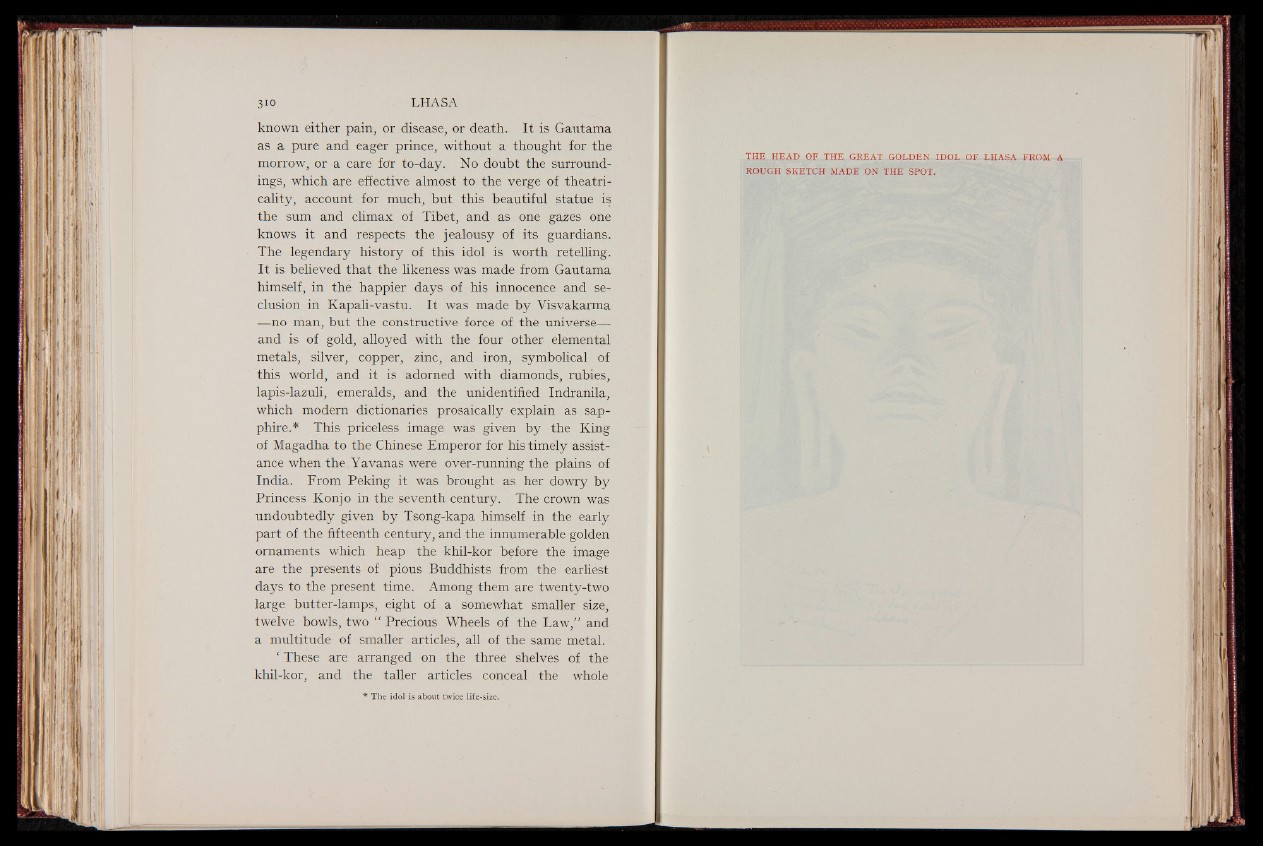
known either pain, or disease, or death. It is Gautama
as a pure and eager prince, without a thought for the
morrow, or a care for to-day. No doubt the surroundings,
which are effective almost to the verge of theatricality,
account for much, but this beautiful statue is
the sum and climax of Tibet, and as one gazes one
knows it and respects the jealousy of its guardians.
The legendary history of this idol is worth retelling.
I t is believed that the likeness was made from Gautama
himself, in the happier days of his innocence and seclusion
in Kapali-vastu. It was made by Visvakarma
— no man, but the constructive force of the universe—
and is of gold, alloyed with the four other elemental
metals, silver, copper, zinc, and iron, symbolical of
this world, and it is adorned with diamonds, rubies,
lapis-lazuli, emeralds, and the unidentified Indranila,
which modern dictionaries prosaically explain as sapphire.*
This priceless image was given by the King
of Magadha to the Chinese Emperor for his timely assistance
when the Yavanas were over-running the plains of
India. From Peking it was brought as her dowry by
Princess Konjo in the seventh century. The crown was
undoubtedly given by Tsong-kapa himself in the early
part of the fifteenth century, and the innumerable golden
ornaments which heap the khil-kor before the image
are the presents of pious Buddhists from the earliest
days to the present time. Among them are twenty-two
large butter-lamps, eight of a somewhat smaller size,
twelve bowls, two “ Precious Wheels of the Law,” and
a multitude of smaller articles, all of the same metal.
‘ These are arranged on the three shelves of the
khil-kor, and the taller articles conceal the whole
* The idol is about twic,e life-size.
THE, HEAD OF THE GREAT GOLDEN IDOL OF LHASA FROM A
ROUGH SKETCH MADE ON THE SPOT.